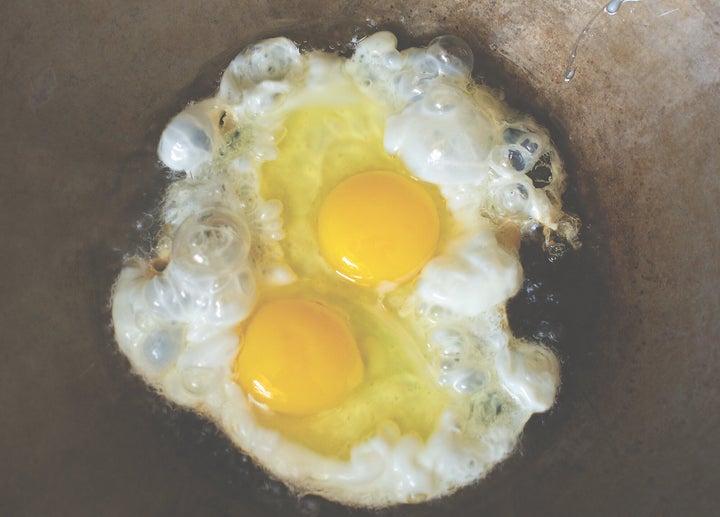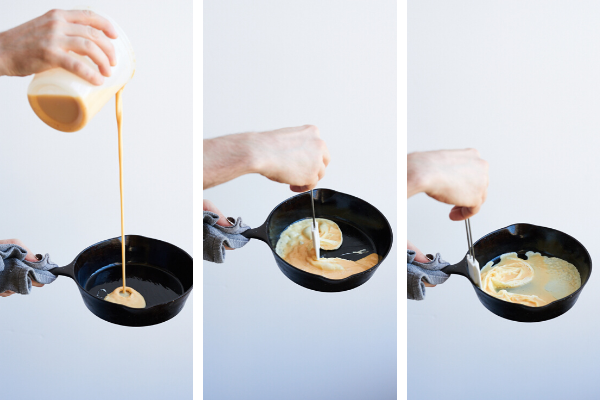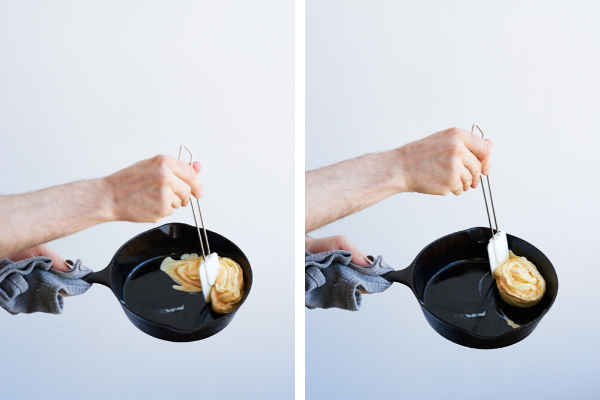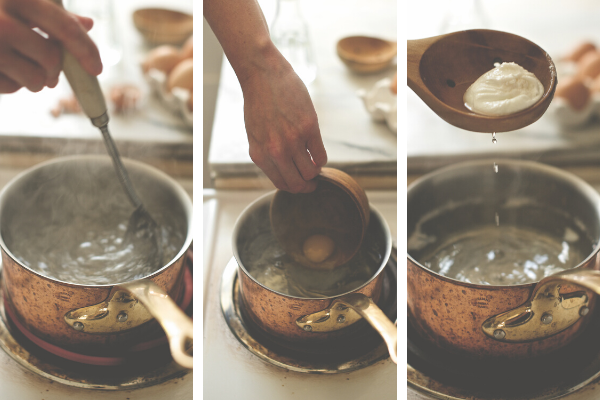Mediocre eggs can make or break a breakfast plate, and there’s no need to settle when just a few tweaks can take your home-cooked eggs from good to great. To help you achieve perfectly cooked sunny side up eggs (with cooked whites and runny yolks), hard-boiled eggs that are easy to peel, silky scrambled eggs and more, we’ve asked professional chefs to share the top mistakes they see people make in the kitchen and how to fix them.
The key thing to master when cooking eggs is heat control. “No matter the style or technique, it’s important to use the right level of heat and understand your desired end result,” Nick Korbee, partner at Egg Shop, told HuffPost. “It’s all about building confidence in the ability to control the temperature of your cooking implement. If your pan is smoking hot, fear not. You can always remove it from the heat for a few minutes and start over. While you can’t undo overcooking, you can learn to master heat.”
Sunny Side Up
Mistakes: Overcooking egg yolks, undercooking egg whites and moving eggs too much while cooking
Solutions: Cook eggs low and slow, and cover briefly if necessary

When cooking sunny side up eggs, Frank Proto, director of culinary operations at the Institute of Culinary Education, cooks with a lower heat to ensure the egg whites cook through while the yolk stays runny. He starts at a medium to low heat with oil or butter in the pan, even if it’s nonstick. “I always put oil or butter in the pan, something that’s gonna add flavour to the actual dish,” Proto said.
Crack your eggs into the pan and simply let them cook. “Sometimes people get a little nervous and start moving [the eggs] around. Just let them cook,” Proto said. And don’t forget to season; Proto keeps it straightforward and uses salt and pepper.
For home cooks who cover the pan when cooking sunny side up eggs, Proto warns that leaving the cover on for too long can cook the yolks, in addition to the whites. “For sunny side up eggs, the yolk should be soft, so I’ll leave it in the pan until the whites just set,” Proto said. “If you cover it, you’re adding a little steam, which might cook the yolk a little too much, so I tend not to cover it.”
If speed is your main concern, Jen Toomey, chef de cuisine at Huckleberry Bakery and Café, Milo and Olive and Milo SRO in California, shared a hack that she finds particularly helpful during the breakfast rush on weekends. “Start with a hot pan, a nice little smear of butter, obviously, and then the trick we use the most to make sure the whites are cooked evenly is we just break the whites open with a spatula and let them run through,” Toomey told HuffPost. “We break it through a couple times so that the whites drop to the bottom of the pan; it helps it coagulate so much faster and then you get an evenly cooked, nice runny yolk but a firm white.”
Scrambled Eggs
Mistakes: Overcooking and not moving the eggs around in the pan
Solutions: Remove eggs from the heat while they’re still a bit glistening and moist, and stir and fold eggs constantly while cooking


There are rubbery, overcooked scrambled eggs that you may find at a breakfast buffet and then there are soft scrambled eggs: fluffy, delicate and a touch gooey (in a good way). To achieve the latter, don’t overcook your eggs (read: take them off the heat while they’re still moist), keep them moving in the pan and make sure you season them.
“A soft scramble should be nearly pourable with small ‘curds,’ and is best accomplished over low heat with constant stirring and folding,” Korbee said. “Never scramble eggs over high heat or forget to stir and fold!” He also recommends waiting until the end to add salt. “Salt will draw moisture from the eggs during the cooking process, which will negatively impact the texture.”
Hard-Boiled Eggs
Mistakes: Cracking the eggs when placing them in the pot, overcooking and mangling your eggs when peeling them
Solutions: Add eggs to hot water, and place them in an ice bath right after cooking
Approaches varied between the chefs on this particular topic, with some putting eggs in cold water and bringing it to a boil and others putting their eggs in the water only after it’s boiling. Timings also varied — 10-12 minutes in boiling water for eggs placed in cold water and 8.5-13 minutes for eggs placed in hot water. What the chefs did agree on, however, was that submerging boiled eggs in an ice bath is essential to prevent further cooking and that unattractive green-gray ring around the yolk.
Cookbook author and food stylist Andrea Slonecker was particularly passionate about this method of cooking eggs, and shared with us her tried and true method that she studied when writing her book “Eggs on Top: Recipes Elevated by an Egg.”
“All you have to do is bring the water to a boil, reduce it to a gentle simmer, add your eggs, and cook for 12-13 minutes depending on how many eggs you have in the pot,” Slonecker told HuffPost. The more eggs you add to the water, the longer it will take to bring the temperature back up.
Slonecker avoids adding eggs to water that’s at a full boil (as the eggs will knock into each other and the sides of the pot) and uses room temperature eggs, which “prevents the shock of the cold eggs hitting the hot water and the eggs cracking before they’re done.”
Poached Eggs
Mistakes: Using a pan that’s too deep, overhandling the eggs and not draining the eggs after cooking
Solutions: Use a low-sided pan with straight sides, avoid moving the eggs too much when cooking, and use a slotted spoon and paper towel to drain the egg before serving

Proto’s method for poached eggs is relatively unfussy and requires no need for a vortex (a method of swirling the water, which he doesn’t teach, as there are many ways it can go wrong). He uses a sautoir, a pan with short, straight sides.
“You want the egg to be submerged fully, but you don’t have to have so much water. If you have a high-sided pan, you can’t really reach in all that well without burning your fingers on the side of the pot.” Proto seasons his water with salt and adds plain distilled vinegar to help set the egg white right after it’s dropped in.
When the water is just under a simmer (around 180 degrees Fahrenheit), Proto drops in his eggs. “I crack my eggs into a small coffee or tea cup and drop them in one at a time, putting the cup into the water and then just sliding the egg out nice and easy.” He lets the eggs cook for 3-5 minutes, and is careful not to push the eggs around as that can cause them to split in the water.
Use a slotted spoon and place your poached eggs on a paper towel to drain fully before serving — the last thing you want is a soggy English muffin.
Omelet
Mistakes: Overcooking, and adding raw fillings to your eggs
Solutions: Remove the omelet from the pan while the inside is still moist, and pre-cook fillings like mushrooms and onions
While you can get away with sprinkling some cheese in the centre of your omelet just before folding it and serving, Slonecker notes that any toppings you’d like to be cooked through need to be precooked before adding them to your eggs.
As usual, overcooking is a common pitfall. “People need to stop cooking the eggs while they’re still a little bit moist as they will continue cooking off the pan,” Slonecker said. “My biggest pet peeve is how almost everyone way overcooks omelettes and scrambled eggs. I keep them pretty moist because I actually like my eggs to not be totally set.”
